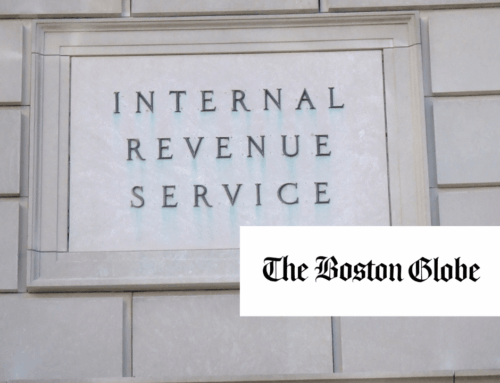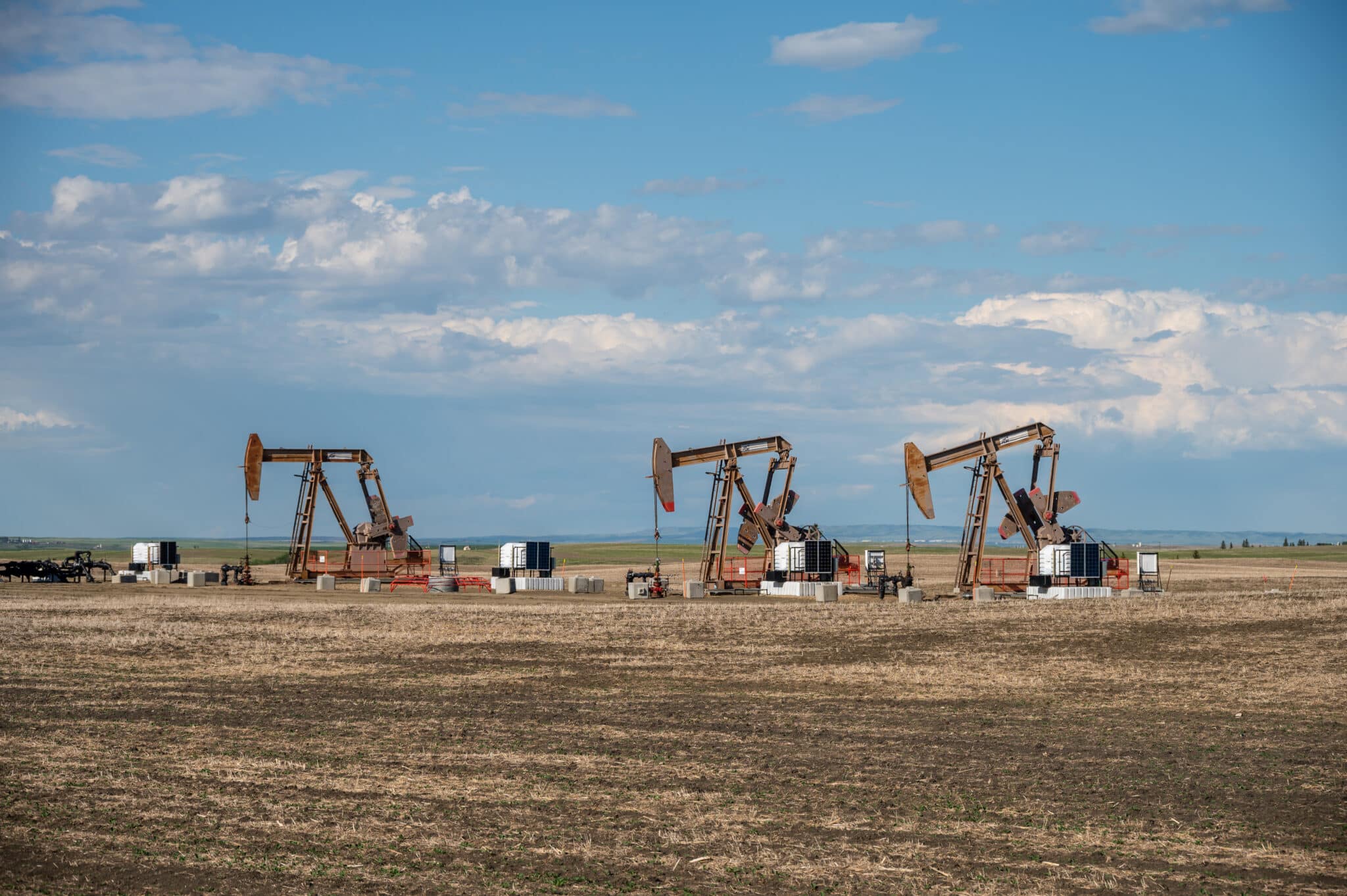Golden Fleece Award
$190 Million Bridge to Nowhere
This article was first published June 12, 2003 when TCS was the first to shed light on the "Bridge to Nowhere"
Rep. Don Young (R-AK), Chairman of the House Transportation and Infrastructure Committee, is trying to sell taxpayers a $190-million, one-mile bridge from the town of Ketchikan, Alaska on Revillagigedo Island to Gravina Island, a sparsely populated island on the southern end of the Alaskan Peninsula.
This bridge is purportedly meant to replace the ferryboats which adequately handle passenger traffic between the islands.
Far from being beneficial to the local economy, the bridge would jeopardize Ketchikan’s largest industry: tourism. But, the real motive behind this boondoggle is to pave the way for well-connected timber interests to clear the island of hundreds of millions of dollars worth of old-growth forests.
Project Purpose: Industry Payoff or Practical Planning?
Project contractors aver that Gravina Access Project would serve “to improve surface transportation between Revillagigedo (Revilla) Island and Gravina Island,”1 yet prior to the bridge proposal, there had been few complaints on record from local residents about the seven-minute ferry ride to Gravina.2 Despite the Ketchikan Gateway Borough’s insistence that the bridge is necessary to provide more convenient access to the Ketchikan Airport, local opponents of the project point out that there are much simpler ways to make airport travel more convenient, while also avoiding major safety concerns and saving hundreds of millions in taxpayers dollars. In addition to the costs associated with the bridge to Gravina, taxpayers will be forced to bear the costs of road building and maintenance, street lighting, public works, increased fire and police protection, heavily subsidized timber sales, and other such costs.
It’s hard to imagine that the U.S. Forest Service’s proposed timber sale3 on Gravina Island isn’t the real reason this bridge was selected as one of 16 high priority projects funded in Alaska by the federal transportation bill, “Transportation Equity Act for the 21st Century” (TEA-21).4 This bridge would enable the timber industry to access 37 million board feet of old-growth timber in the Tongass National Forest, and open the remainder of the island to further development, as well as the taxpayers’ pocket book to even further damage.
National forest logging costs taxpayers billions of dollars in subsidies and lost revenue. According to the Congressional Report Service, the Forest Service spends more than $15,000 per mile of forest road constructed.5 Within the Tongass National Forest on Gravina Island alone, federal taxpayers could face costs up to $330,000 to build 22 miles of proposed logging roads in order to access timber sales in this area. Commercial developers have also weighed in with their support for the bridge – a necessary addition to Gravina if they wish to cash in on their inexpensive land purchases.6
Project Costs
The cost associated with the Gravina Bridge “preferred reasonable alternative” (Alternative F3 – proposing two bridges, one reaching 200 feet and the other 60 feet in height) is estimated at a minimum of $190 million.7 With only 13,782 Ketchikan Gateway Borough residents, that’s a cost of $13,786 per person. Approximately $38 million (a 20 percent match) in funding for the project will have to be paid by local or state entities, and the federal taxpayer will cover the rest. In 1998, Senator Stevens (RAK) secured $20.4 million through TEA-21 for environmental and engineering studies related to the construction of “a bridge joining the Island of Gravina to the community of Ketchikan on Revilla Island.”8 The Alaska Department of Transportation and Public Facilities (DOT&PF) has committed to matching the initial stages of project development through environmental review and engineering design. The fiscal year 2003 Omnibus Appropriations Act also provided $2 million for preliminary work on the project.
Unfortunately, the $190 million estimate does not account for the full cost of the bridge, as many costs associated with bridge construction were not included in the original assessments. For example, unlike the two ferries currently in place, which charge a small access fee to help cover their operating cost, the bridge would accumulate an estimated $270,000 in annual operating and maintenance costs that would not be covered by access fees.9 Additionally, the project would also build 3.2 miles of road between the bridge and the Ketchikan Airport on Gravina Island. Because of an increase in parking demands, studies predict that a parking structure at the airport terminal will also be needed. This would require an additional $11 million for construction and $120,000 in annual operating and maintenance costs.10 Since local and regional governments do not have the ability to cover such costs, these costs are likely an additional expense for the federal taxpayer. Finally, logging in the Tongass National Forest made accessible by this project would produce a net loss for the federal government, which could also be left holding the bag if the bridge causes Ketchikan’s tourism industry to collapse.
Although full funding for this project has not yet been secured, Ketchikan residents are understandably concerned about how this shift in government priorities will affect the area’s already sparse government funding. In the winter of 2002-03 snowplowing on ancillary roads in the Ketchikan Gateway Borough was discontinued due to lack of funding. Residents point out that the area’s need to match the $23 million in federal funds already allocated might cause state and local governments to cut back on much needed social services and road maintenance priorities. Building more major road projects will further exacerbate the region’s inability to carry out necessary maintenance of infrastructure as outlined in the Southeast Alaska Transportation Plan.11
Negative Effects of Bridge Construction
While proponents of this project tout economic development as the rationale for bridge construction, project-engineering studies have determined that the proposed bridge would reduce cruise ship dockings and impede flight paths, threatening Ketchikan’s fastest growing industry – tourism.12
Safety Concerns
Construction of a 60-foot high bridge across the East Channel would cause serious safety repercussions. Engineering studies have determined that the bridge would make cruise ship navigation very risky. According to a Monte Carlo simulation, a Coast Guard approved simulation tool, one in sixty cruise ships navigating the channel would run aground because of the new bridge proposal.13 In 2001, more than 400 cruise ships navigated this area, which would predict the grounding of six cruise ships in the event of bridge construction. Responding to six groundings would cost the Coast Guard – and the American taxpayer – at least $1.75 million each year. The state would be required to obtain approval for the bridge from the Coast Guard, but because of the risk of groundings, Jim Helfinsine, bridge administrator for the 17th U.S. Coast Guard District, stated, “Alternative F-3, as proposed, will not provide for the reasonable needs of navigation and in all likelihood will not receive support or approval from the Coast Guard.”14 Therefore, the even more costly F1 alternative, incorporating two bridges, each over 200 feet high, is now being considered, despite the fact that it had been eliminated during the initial stages of project development due to its excessive cost.
In the spring of 2002 the cruise ship pilots associations were asked to participate in another simulation at the STAR Center in Dania Beach, Florida at taxpayer expense. The results of the more recent simulations have not been released to the public, but mariners with years of experience navigating the Tongass Narrows report that it is extremely difficult to maneuver through even the wider East Channel because of the winds, tides and currents without increasing the swept path of the vessel. The issue then becomes, not the height of the bridge, but the distance between the bridge abutments. The Tongass Narrows is a part of the Inside Passage, a protected waterway between the lower 48 states and Alaska. A bridge across the Tongass Narrows would create the first obstruction across the Inside Passage and a hazard to navigation.
Local ship captains have also voiced concerns about the bridge’s possible interference with the communication and precision-timed maneuvers between captains and marine pilots. During the public comment period in February of 2002, residents voiced concerns about the bridge’s ability to safely withstand gusts of winds up to 100 mph.15 Safety risk evaluations also failed to take into consideration the effects of the heavy winds, rain, ice, and fog that dominate Ketchikan’s climate. Project analysis is incomplete without proper safety studies on the number of accidents that may occur with an increase in road and bridge area, and driving on these surfaces in such conditions.
Decline in Cruise Ship Visits
Construction of the F3 alternative bridge would likely force cruise ships through the West Channel of the Tongass Narrows, as opposed to the East Channel. This would require cruise ships to execute the equivalent of two 180-degree turns while docking – a maneuver that is currently not required by East Channel access. It is estimated that these maneuvers would increase docking time by 30 to 40 minutes. Because of the complexity of these maneuvers and the added time they require, some cruise lines currently do not allow their ships to use the West Channel.16 Making docking in Ketchikan too costly – in time and money – to justify because of required use of the West Channel would negatively affect the tourism industry. A January 2002 study, Effects on Cruise Ship Operations Draft, found that Ketchikan could lose between $2.1 and $11 million each year as a result of lost cruise ship dockings.
Studies also estimate that the bridge could cost Ketchikan over 1,200 jobs from the cruise and charter air industries, as well as an additional 210 jobs for related operations and maintenance.17 This would put more than 10 percent of local residents out of work. In contrast, bridge construction would provide only 440 direct and indirect jobs over the three years of project construction. Furthermore, current bridge proposals would generate only $90,000 to $140,000 in economic benefits to the local economy, which is much less than the $3.8 million produced by ferry access over the same time period.18
Additionally, because of the bridge’s alignment with floatplane flight paths, Special Visual Flight Rules (SVFR) clearance may be cancelled. This cancellation would result in an estimated loss of 418 flight-seeing trips and creation of 1,149 flight delays annually.19 This disturbance in tourism and local flights would incur an annual revenue loss of more than $1 million.20 Ketchikan residents cannot afford to lose their largest source of revenue.
Massive Opposition
During a public comment period, over 8,000 people from Alaska and around the country told the Forest Service not to build roads and log in the roadless areas.21 The nearby Native villages of Saxman and Metlakatla strongly oppose the timber sale because it will disrupt their traditional, cultural, and subsistence uses of the island. As stated in the public comment period, Alaska Natives – Tlingit, Haida, and Tsimshian – have used Gravina for subsistence hunting and gathering for many generations22, and any road construction would jeopardize a long history of traditional values.23 Gravina Island is also the site of a Native burial ground. In March of 2002, the City Council of Saxman passed a resolution rejecting plans for a bridge.24
Conflict of Interest
With the same contractor (HDR Inc.) leading the project team, conducting environmental studies, and showing strong interest in designing and contracting, the project research has a serious lack of sufficient objectivity. Project managers failed to conduct proper air and water quality studies during the cost-benefit analyses. Because of a currently impaired water body in the Tongass Narrows, the EPA is negotiating with local seafood processors over fish waste outfalls that compromise local water quality. Without an independent cost-benefit analysis process, taxpayers can expect to pay far more than $190 million in these hidden costs.
Closing
While this $190 million bridge may lead Alaskans down a road to nowhere, it will certainly lead the federal government down the road to bigger budget deficits. Given the strong opposition to bridge project, questionable project rationale and evaluation, and the country’s more than $400-billion deficit, the only responsible thing to do at this time is to kill funding for the Gravina Access Project. Doing so would alleviate the undue financial burden this project would place on taxpayers, and allow for a more impartial analysis of area development option.
Gravina Bridge Timeline
- Winter 1996: Borough of Ketchikan passed Resolution 1311 supporting the funding and construction of a bridge between Revilla Island and Gravina Island. Resolution also urged the support of then Governor Knowles and the Alaska Department of Transportation.
- Summer 1998: Transportation Equity Action (TEA)-21 provides $20.4 million for environmental and engineering studies related to the construction of the Gravina Access Project “a bridge joining the Island of Gravina to the community of Ketchikan on Revilla Island.”
- 1999: DOT&PF contracted with HDR Alaska, Inc. to conduct economic, engineering, and environmental studies for the project area.
- Spring 2000: Eighteen alternative concepts developed by HDR; after consideration, the DOT&PF selects seven as reasonable alternatives.
- Winter 2001: Department of Agriculture Forest Service releases the Draft Environmental Impact Statement for Gravina Island Timber Sale.
- Spring 2001: Engineering studies lead to some refinements of the alternatives and the addition of a new alternative, for a total of eight reasonable build alternatives.
- Winter 2002: DOT presents bridge alternatives and engineering, economic and environmental reviews for comment.
- Winter 2003: DOT conducts additional navigation studies that substantiate earlier findings that the bridge presents a significant marine navigation hazard.
- Summer 2003: Expected release of the Final Environmental Impact Statement for the bridge.
Additional Resources
View the original Press Release: June 12, 2003
Project Update, February 9, 2005 — The Gravina Access Project: A Bridge to Nowhere
“Built With Steel, Perhaps, but Greased With Pork” New York Times, April 10, 2004
View/Download this article in PDF format.
Footnotes:
1 HDR Alaska, Inc. January 2002. Gravina Access Project. Alternatives Evaluation: Summary Report Draft.
2 Alaska Airlines, the only commercial passenger airline that flies to Ketchikan, currently runs seven daily flight routes in the summer and six in the winter. Presently, two ferries, which run every 15 minutes in the summer and every 30 minutes in the winter, provide transportation to and from the airport on Gravina Island. In addition, the city maintains a third ferry boat in case of emergency.
3 USDA Forest Service. January 2001. Gravina Timber Sale: Draft Environmental Impact Statement.
4 November 1999. Section 1101(a)(13) of the Transportation Equity Act for the 21st Century (Public Law 105-178). Attachment 3.
5 Gorte, Ross. 1997. Congressional Report Service, Environment and Natural Resources Policy Division. Forest Roads: Construction and Financing. (Washington, DC. July 16).
6 Seventy-seven percent of Gravina Island is owned by the public, with the U.S. Forest Service holding title to 64 percent, and the State of Alaska’s Department of Natural Resources owning 13 percent. The Ketchikan Gateway Borough owns eight percent of the land on Gravina Island, and three percent is taken up by the Ketchikan International Airport, which is owned by the State of Alaska and leased to the Borough. The remaining land (12 percent) is owned by private landowners, who can open these lands to commercial development.
7 HDR Alaska, Inc. December 2001. Gravina Access Project. Preliminary Quantities and Cost Estimate, Technical Memorandum, (Draft). Page 4.
8 See citation #3.
9 Ibid. Page 10.
10 Ibid. Page 1. Annual O&M costs calculated using life cycle total cost and life cycle estimates (see page 5).
11 KJS Associates, Inc. March 1999. Southeast Alaska Transportation Plan. Division of Statewide Planning.
12 HDR Alaska, Inc. January 2002. Gravina Access Project. Effects on Cruise Ship Operations Draft.
13 The Glosten Associates, Inc. January 2002. Gravina Access Project. Monte Carlo Navigation Simulation Technical Memorandum (Draft).
14 March 4, 2002. Letter from Jim Helfinstine to Mark Dalton, a consultant directing work on the Gravina bridge.
15 HDR Alaska, Inc. March 2002. Gravina Access Project. Reasonable Alternatives: Public Comment Summary Document.
16 Klugherz & Associates. May 2001. Interim Assessment of Cruise Industry Interviews.
17 HDR Alaska, Inc. January 2002. Gravina Access Project. Economic Impact Assessment Draft.
18 Ibid. Page 5.
19 Ibid. Page 7.
20 Ibid. Appendix A.
21 USDA. USFS. 2000. Summary of Public Comment: Roadless Area Conservation Proposed Rule and DEIS.
22 Ketchikan Indian Corporation. October 2000. Tribal, Ketchikan, AK – #13987.92300. Summary of Public Comment: Roadless Area Conservation Proposed Rule and DEIS. Chapter 7: Social and Economic Consideration. Page 8.
23 Tribal, Ketchikan, AK – #13987.90230. ibid.
24 City of Saxman. March 15, 2002. Resolution #02-03-254.
Related Posts
Most Read
Recent Content
Analysis
Apr 22, 2025 | 4 min readLetter
Apr 16, 2025 | 14 min read
Stay up to date on our work.
Sign up for our newsletter.
"*" indicates required fields











Get Social